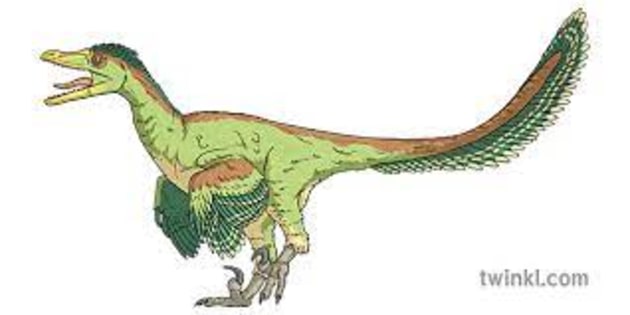



While the first dinosaur that comes to mind for many is the colossal Tyrannosaurus Rex, perhaps the second most recognisable dinosaur is the Velociraptor.
A speedy, carnivorous - or meat-eating - dinosaur, the Velociraptor lived in what is now modern Asia during the Late Cretaceous period 100 to 66 million years ago, a time in which the Earth was warmer than it is now, but in a rapid period of cooling down. Tropical, warm regions started to exist only around the equator - the middle ring of the Earth we can see on any globe in your classroom - while northern regions started to become colder.
The Velociraptor is a member of the Dromaeosauridae (dro-may-o-saw-day) family of dinosaurs, known for their large, curved claws. It belonged to the Saurischia order - an order of dinosaurs marked for their modern lizard-like legs and hips. Of these, the Velociraptor is a member of the Theropoda suborder - all of the 'lizard-hipped' dinosaurs who were carnivorous. It can be called a raptor or described as a theropod.
So, where did the Velociraptor live? The Velociraptors had their greatest populations in modern-day Asia, around Inner Mongolia and the Batken region of Kyrgyzstan. Fossils have been found further west, as far as Alberta in Canada.
The Velociraptor was found commonly in the Gobi Desert in Mongolia - the climate of the Gobi Desert has barely changed since prehistoric times, meaning it is still in a similar state to when dinosaurs would have once roamed. The first recorded Velociraptor fossil was found here in 1923.

And what did the Velociraptor eat? Calling desert environments like the Gobi their home, food was scarce for the Velociraptors - they needed to be efficient and strong hunters to survive.
Velociraptors hunted small herbivores and would chase them with their impressive sprinting speed of 25 miles per hour. Working together, they would jump on top of their prey and use their long claws to dig into the animal while biting them with their 60-curved teeth.
Much like other fast-moving predators like the cheetah, the Velociraptor relied on hiding themselves to get close to their prey, attacking them by surprise to ensure they did not expend too much energy using their speed.
Velociraptors were carnivorous, so they ate other animals' meat exclusively - but they would get creative by eating unattended dinosaur eggs or carrion - the leftovers - from the meals of larger predators.
While Velociraptors in big-budget Hollywood films look to be much bigger than us - arealVelociraptor is closer in size to a modern-day Turkey - so, still, an animal you wouldn't want to get chased by, but it isn't nearly as huge as you might think! But how big was a Velociraptor? - while short, Velociraptors are still around 6 feet in length from snout to tail.
Often thought to be the fastest dinosaurs that ever lived,Velociraptorscould only sprint for short distances at 25 miles per hour speeds. That's about as fast as a professional cyclist!
A topic as fun as dinosaurs deserve equally fun learning resources to go along with it! If you are looking for some recommendations to take your class back in time to the Jurassic period, look no further than our dino-mite selection of dinosaur-themed learning resources:
Or, for a handy video to show your class to give them a simple introduction to the concept of dinosaurs, take a look at this Twinkl video aid below: